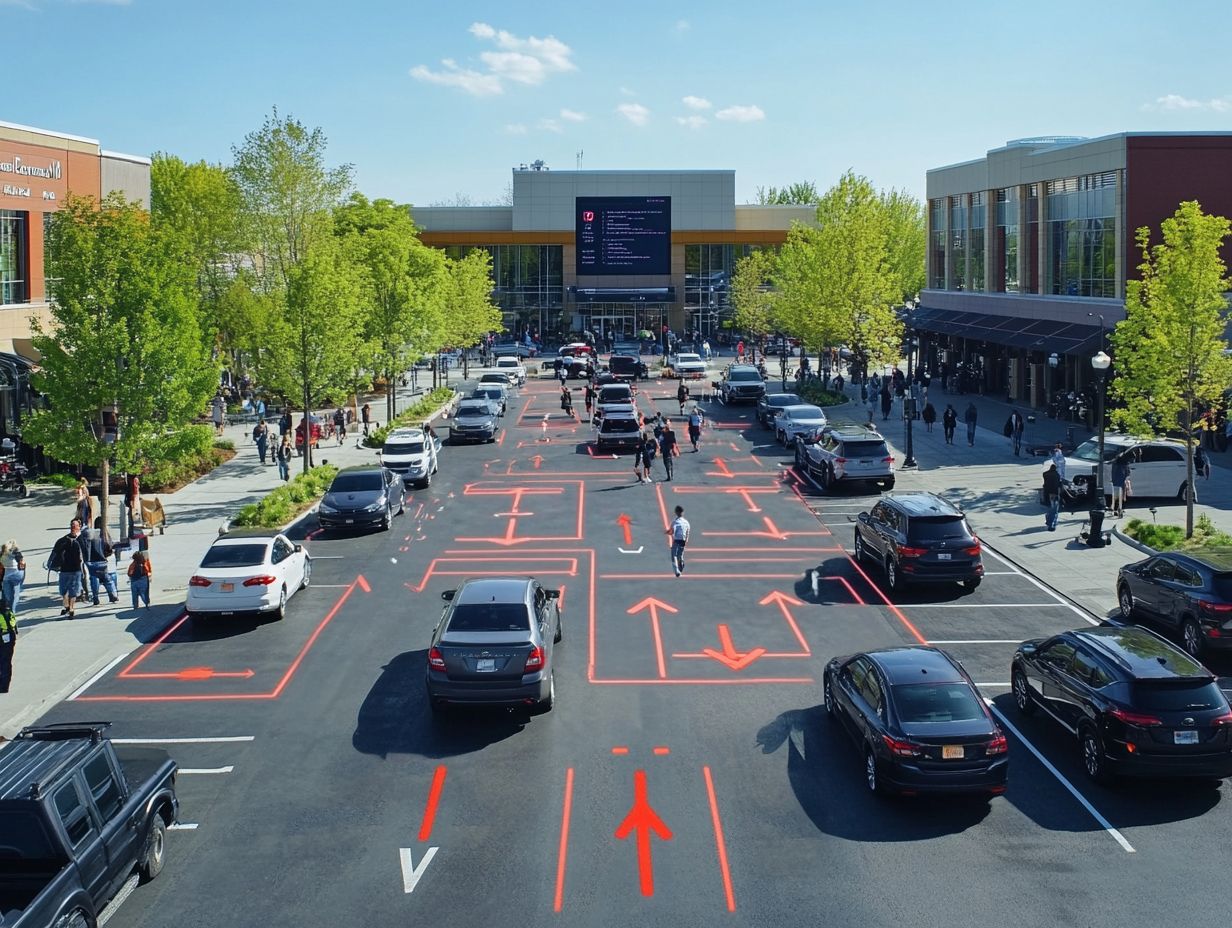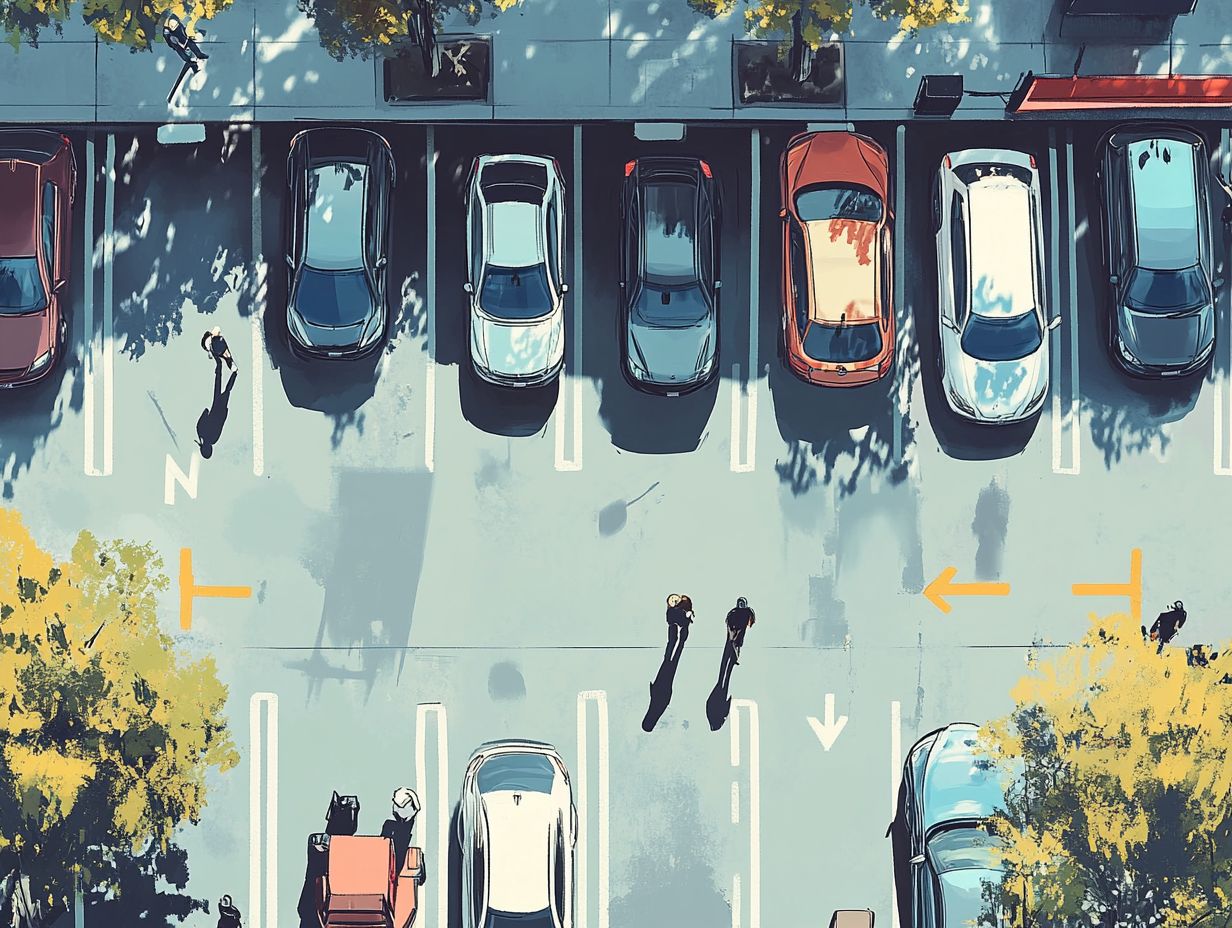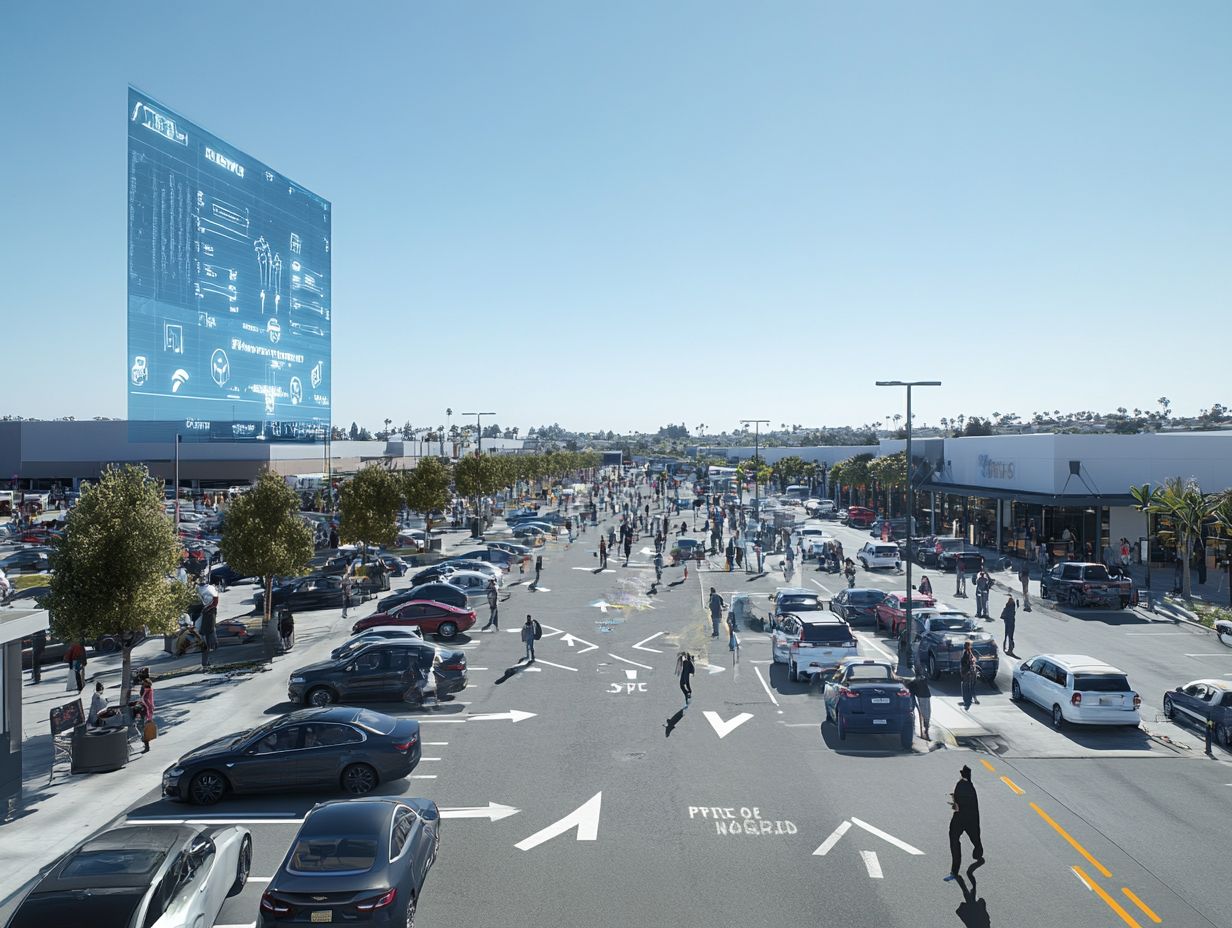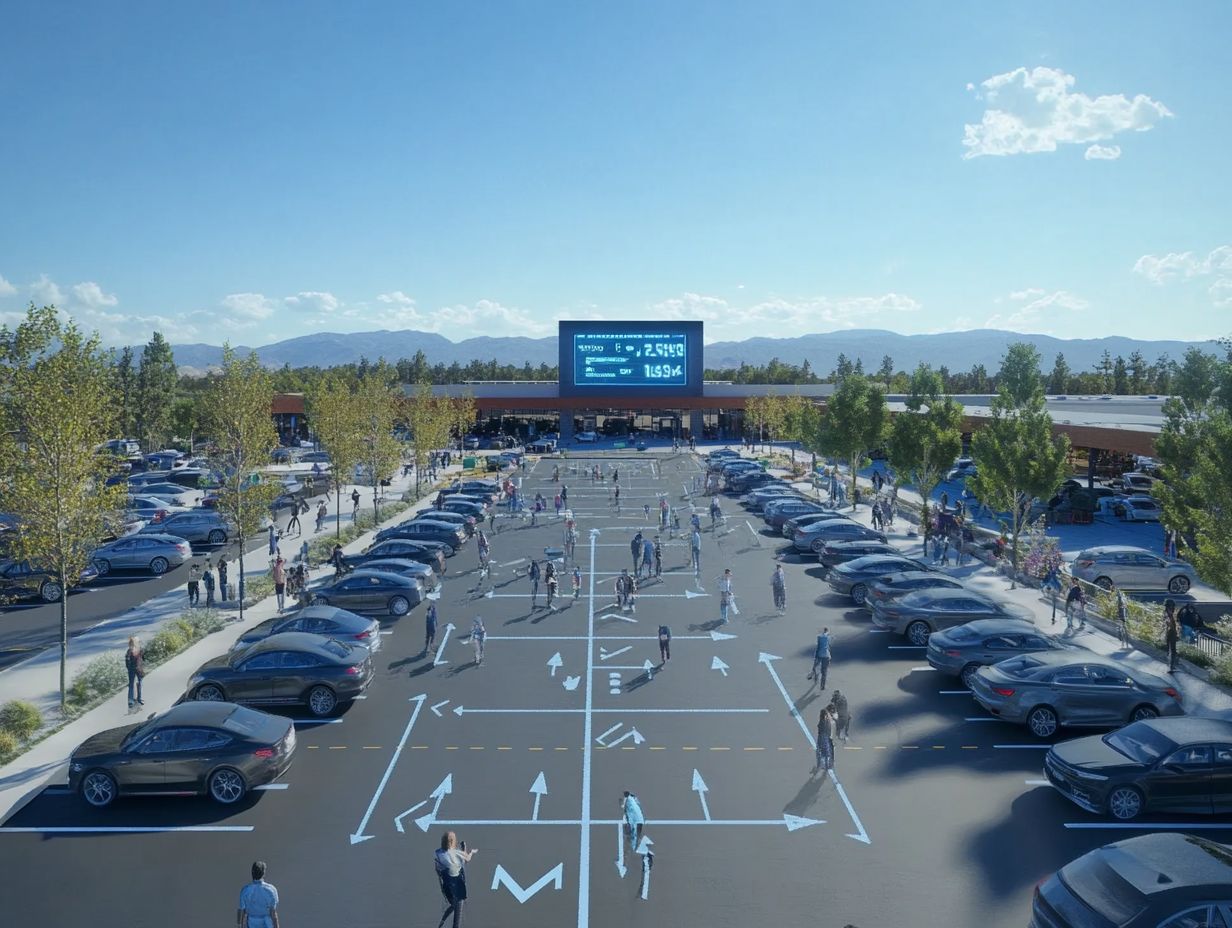In today’s fast-paced world, understanding foot traffic data is essential for creating efficient parking lot designs that enhance customer experience and improve traffic flow.
This article explores what foot traffic data is and how it is collected, highlighting its vital role in optimizing space, layout, and vehicle access.
Discover the benefits of leveraging this data to improve not only the functionality of parking areas but also the overall satisfaction of visitors by analyzing pedestrian patterns.
With insights on best practices and technology integration, learn how to effectively incorporate foot traffic data into your design strategy for better space utilization and efficiency.
Understanding Foot Traffic Data

Foot traffic data is essential for urban planning and parking lot design, as it helps businesses and urban planners gain insights into customer behavior, pedestrian movement, and traffic patterns.
With this understanding, they can optimize parking solutions, conduct spatial analysis, and design guidelines to enhance user experience and accessibility. Ultimately, this leads to improved parking utilization and efficiency for commercial spaces.
What is Foot Traffic Data?
Foot traffic data refers to the metrics and qualitative insights obtained by tracking pedestrian movement and vehicle access in specific locations. Businesses and urban planners utilize this data to gain valuable customer insights.
Key metrics include the number of visitors, dwell time, active hours, and movement patterns. Understanding these metrics is essential, as they reveal usage patterns and help stakeholders make informed decisions to optimize their spaces using data analytics and location analytics.
When combined with advanced technology and data visualization tools, organizations can interpret foot traffic data more effectively, tracking trends over time and informing operational strategies. Consequently, foot traffic data plays a crucial role in design optimization strategies and capacity planning.
How is Foot Traffic Data Collected?

Foot traffic data is collected using sensor technology, real-time data tracking, and various monitoring tools to visualize pedestrian and vehicle movement. These technologies are essential for businesses to understand customer patterns and behaviors, enabling them to make data-driven design choices.
Methods such as infrared sensors and video analytics assist organizations in achieving operational efficiency and enhancing their overall strategies, including the integration of smart parking solutions.
The accuracy of data collection methods is critical, as the precision of foot traffic data directly impacts the success of marketing campaigns, resource allocation, and economic impact.
By exploring the interaction between sensor technology and real-time analytics, businesses can gain deeper insights into foot traffic trends, ensuring they meet and anticipate consumer demand effectively, while considering environmental impact and safety.
Benefits of Using Foot Traffic Data for Parking Lot Design
The advantages of using foot traffic data for parking lot design include optimized space and layout, increased efficiency, and better parking utilization, all of which contribute to improved design and enhanced customer satisfaction.
Real-time data enables urban planners to make informed decisions that align with community needs and behaviors, ultimately reducing overall traffic congestion and enhancing the user experience in commercial spaces through improved infrastructure design and parking efficiency.
Optimizing Space and Layout

Optimizing space and layout in parking lot design requires strategic planning and the application of design principles that consider foot traffic data to enhance parking capacity and overall space management.
Analyzing foot traffic patterns enables developers and urban planners to identify peak hours and heavily trafficked areas, which significantly influence the layout design and inform site analysis.
By implementing best practices such as clearly marked pedestrian pathways, designated loading zones, and ample signage, the design can facilitate smooth movement for both vehicles and pedestrians, enhancing user experience and accessibility.
Prioritizing accessibility features, such as wider parking spots for individuals with disabilities, not only complies with legal standards but also demonstrates a commitment to inclusivity, safety, and regulatory compliance.
Additionally, incorporating technology, such as smart parking systems, can optimize space usage and improve the user experience, ultimately resulting in more efficient parking lot designs that cater to the needs of all users through parking management and technology integration.
Improving Efficiency and Customer Experience
Improving efficiency and customer experience in parking lot design is essential for meeting parking demand. This can be achieved by assessing foot traffic data and implementing feedback loops from user surveys.
Advanced technologies, such as real-time monitoring systems, are particularly beneficial in this regard. Additionally, operators can utilize behavioral analytics to obtain more detailed metrics on parking utilization rates, which can help uncover patterns and trends for designing better parking systems and layouts through predictive modeling and user trends.
Community feedback is crucial for adapting parking design to the evolving needs of the community and ensuring that layout and accessibility align with user preferences. This comprehensive strategy allows for a balance between design constraints and user expectations, leading to better space utilization, transportation planning, and improved outcomes for all stakeholders.
Best Practices for Incorporating Foot Traffic Data

Best practices for incorporating foot traffic data into design processes involve integrating technology and data analysis, engaging stakeholders, and aligning with community needs to ensure effective urban planning.
Utilizing Technology and Analytics
Technology and analytics play a crucial role in parking management by facilitating data-driven designs that align with user behavior and parking demand.
Advanced methodologies, including machine learning algorithms and real-time monitoring tools, equip designers with insights into foot traffic patterns, streamline operations, and enhance user experiences through data-driven design.
The connectivity of IoT devices not only offers valuable data but also fosters integration between different systems, providing a comprehensive overview of parking utilization and infrastructure investment.
Predictive analytics can forecast peak hours and guide optimal resource allocation, while automated reporting tools assist in improving decision-making processes to enhance parking policies and design criteria.
The advancement of these technologies can lead to significant changes in the evolution of parking environments, ultimately impacting urban planning, urban mobility, and enhancing consumer satisfaction.
Considering Local Factors and Trends
Considering local factors and trends is crucial in parking lot design, as it ensures that strategies are informed by demographic analysis and the latest advancements in parking technology and innovation.
By taking into account the unique characteristics of a community—such as population density, socioeconomic status, and prevailing mobility patterns—developers can create parking solutions that meet the specific needs of users. This approach not only enhances the spatial allocation of parking but also helps anticipate future demand changes related to local events or commuting patterns, addressing parking demand and zoning regulations.
Studying behavioral trends, including peak demand times and preferred parking features, leads to more customized solutions that increase user satisfaction and support the objectives of sustainable urban development, incorporating green design and adaptive design.






